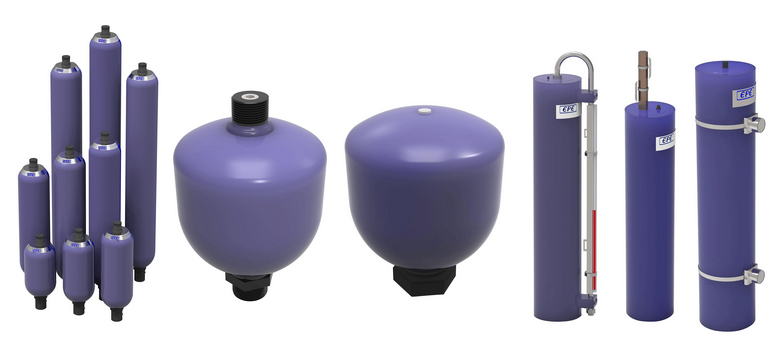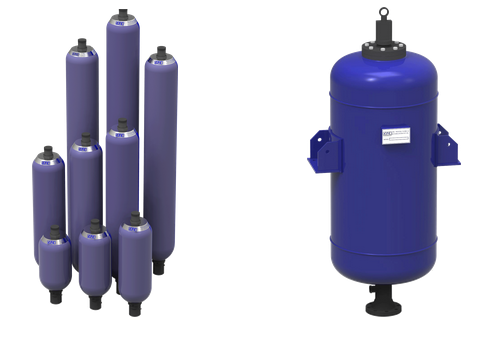are a type of accumulator that has the power to strengthen the working capacity by delivering a smoother and more durable operation service. It mainly can be delivered because the accumulator has the capability to store power that can be used in times of emergency, for example, if an electrical failure ever happens, the power that is saved in the accumulator can be used.

Bladder Accumulator And Other Types Of Accumulators:
The accumulator comes in different types depending on the action it provides. Because of their own structure, they have different capabilities and fulfill the needs of the user accordingly. The accumulators are of three types.
Bladder type hydraulic accumulator
A bladder accumulator is one of the most commonly employed hydro-pneumatic accumulators. This is generally made up of rubber and is fitted in a steel metal vessel. It is filled with nitrogen which makes it applicable.

Piston type hydraulic accumulator
This particular piston accumulator uses the techniques used by a piston. They have the ability to regulate with a much higher gas-compression ratio.

Diaphragm (Membrane) accumulator
Diaphragm accumulators possess a rubber plate or diaphragm that works as a separating element in the accumulator. This particular element can either be combined together between two spherical compartments.

What Is The Purpose Of Hydraulic Accumulators?
The structure of the accumulators is made in a way that makes it one of the most used parts in the hydraulic system. There are various different purposes of the accumulators that make the task of producing the result very easy and effective.
Stocking the energy
The main purpose of the accumulators is to store the energy. However, they only use 2% of the stored power in a time of need. A small amount of power will be condensed, the power will remain however the volume will reduce. That is why they release less pressure.
Absorbing the pulse
The pumps, vane or piston, absorb the pulses. The pulses are what assures that the power is being delivered.
Cushioning the shock
the power creates a shock wave in the system which further results in the creation of pressure in the system. The accumulator tries to buffer the shock by delivering the fluid in a small amount.
Conclusion
Apart from all of these, this accumulator can discharge an excess amount of fluid. The accumulator continues to work together with other parts present in the system to make sure the efficiency of the task. An accumulator is needed in order to maintain the integrity of the hydraulic system meanwhile providing the system with power that they need in times of urgency.
For inquiries contact Hytec Power Inc. PH Distributor

